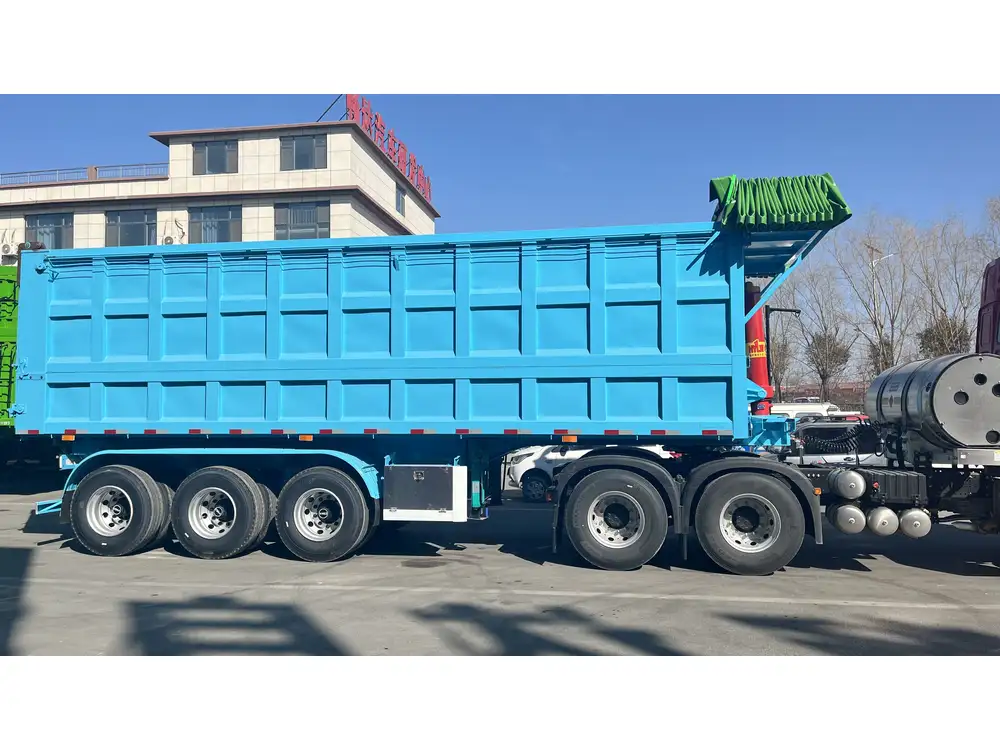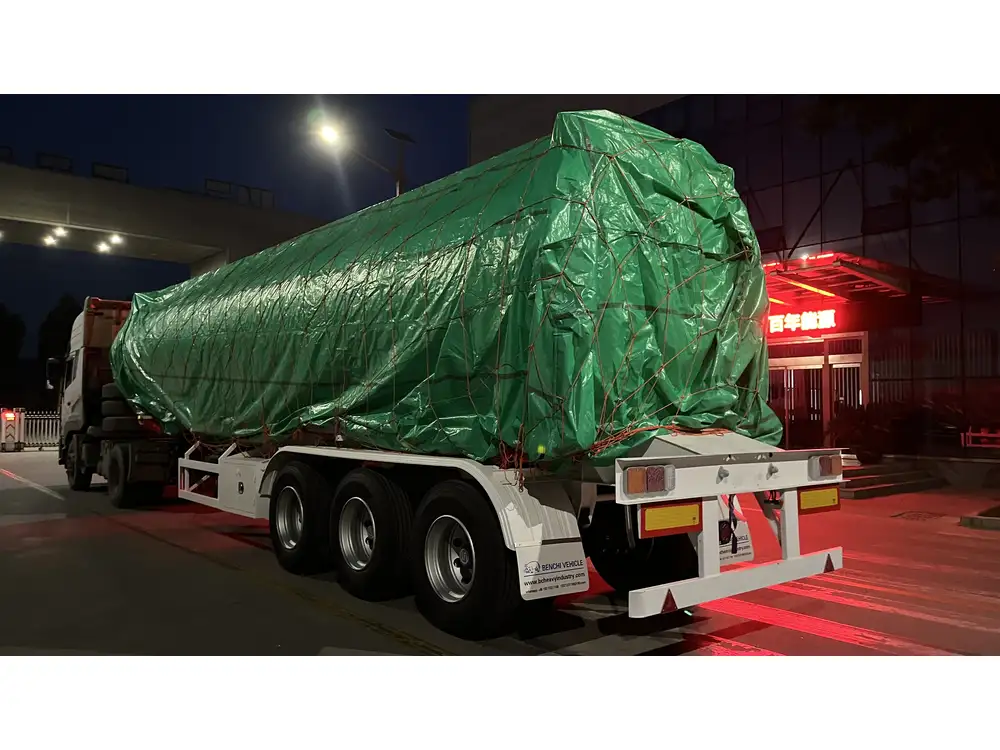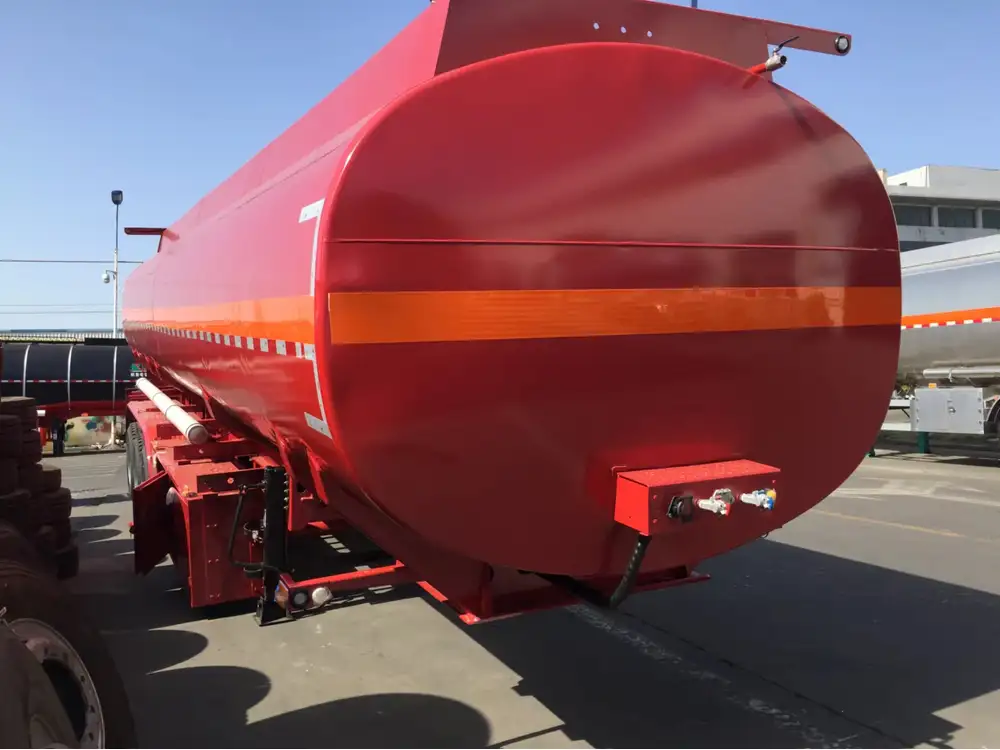In the world of transportation and logistics, the effectiveness of moving vehicles and containers significantly impacts efficiency. As a leading manufacturer of semi-trailers, we recognize the intricate details that navigate the transportation landscape. Specifically, the question arises: Can you put a U-Haul U-Box on a flatbed trailer? This article delves deep into the logistics, compatibility, regulations, and best practices associated with this query.
Understanding U-Haul U-Boxes
U-Haul U-Box containers are portable storage units designed for ease in moving and storing items. They are made from durable materials and offer a convenient way to transport belongings over various distances. Typically, these containers come in dimensions that suit residential and commercial moving needs.
Specifications of U-Haul U-Boxes
| Attribute | Specification |
|---|---|
| External Dimensions | 95″ × 56″ × 83″ |
| Internal Dimensions | 92″ × 53″ × 80″ |
| Payload Capacity | Approximately 2,000 lbs |
| Total Volume | 257 cubic feet |
| Weight of Container | 1,800 lbs |
Note: These specifications may vary slightly based on manufacturing shifts or location.

Evaluating Flatbed Trailers
Flatbed trailers are crucial in the freight hauling industry due to their versatility and robustness. They consist of a flat platform without sides or a roof, making them ideal for transporting oversized cargo.
Types of Flatbed Trailers
| Type | Description |
|---|---|
| Standard Flatbed | Offers a flat area for general cargo, providing support for various types of loads. |
| Step Deck | Features a drop deck that accommodates taller loads by lowering the height. |
| Lowboy | Designed for transporting heavy equipment. Has a lower deck height for better stability. |
| Extendable Flatbed | Allows for longer loads by featuring a telescopic design. |
Compatibility of U-Haul U-Boxes with Flatbed Trailers
Transporting a U-Haul U-Box on a flatbed trailer requires a thorough understanding of compatibility. Key considerations include size restrictions, weight distribution, and securing methods:

Dimensions and Fit
Given the dimensions of the U-Box, it is feasible to place it on a flatbed trailer provided the trailer can accommodate its footprint. However, verifying the dimensions of the selected flatbed trailer is crucial to ensuring a proper fit. Flatbed trailers with a minimum length of 12 feet should adequately handle the U-Box’s 7.5-foot length.
Weight Consideration
The U-Haul U-Box weighs approximately 1,800 lbs, while most flatbed trailers can comfortably carry significantly more weight—typically exceeding 10,000 lbs. Nevertheless, when overloaded, trailers may experience strain, affecting performance and safety. Ensure the flatbed trailer is rated to handle this payload to avoid legal issues.
Securing the Load
Securing a U-Box on a flatbed trailer is critical for safe transportation. Here are the essential steps for effectively strapping down:
- Position the U-Box centrally on the trailer to ensure even weight distribution.
- Utilize ratchet straps or heavy-duty tie-downs: Choose straps that can withstand at least twice the weight of the U-Box to allow for safety margins.
- Anchor to frame: Attach the straps to the trailer’s frame and the designated points on the U-Box, ensuring that the security system is taut yet not overly tight to avoid damage.
- Add corner protectors if necessary to prevent the straps from rubbing against the U-Box’s edges.

Legal Regulations
Transporting a U-Haul U-Box on a flatbed trailer is subject to various transportation laws. Here are critical regulations to keep in mind:
- Weight Limits: Ensure that the combination of the U-Box and the flatbed trailer does not exceed state or federal weight limits.
- Visibility: Ensure the U-Box is adequately marked. If it extends beyond the trailer’s edges, you may need flags as warning indicators.
- Local Policies: Regulations can vary based on location, so always consult local authorities for specific requirements.
Alternatives for Transporting U-Haul U-Boxes
While transport via flatbed trailer is often a practical option, alternatives should be considered based on your needs:
1. Dedicated Moving Trucks
Utilizing a U-Haul moving truck designed for U-Boxes can simplify the transport process. U-Haul offers trucks with dedicated U-Box platforms, ensuring optimal fit and safety.

2. Local Movers
For those who prefer to avoid handling logistics themselves, hiring local movers experienced in transporting U-Boxes can alleviate stress. These professionals come equipped with the right tools and expertise.
3. Freight Companies
Engaging freight companies specializing in container transport might provide optimal solutions, particularly over long distances. They have the necessary equipment and experience to handle varying load sizes.
Common Challenges When Transporting U-Haul U-Boxes
Understanding potential challenges in hauling U-Boxes will help mitigate issues during transport.

1. Weight Distribution
Improper weight distribution can lead to trailer sway, affecting control and stability. Monitoring weight on both sides of the trailer will enhance safety.
2. Weather Conditions
Weather can significantly impact transport. Rain can make loading and unloading hazardous, while strong winds can affect the stability of the trailer. Always check weather forecasts and plan accordingly.
3. Legal Compliance
Navigating the maze of transportation regulations can be tedious and complex. Stay informed about local laws to ensure compliance to avoid penalties.

4. Access and Maneuvering
Flatbed trailers require more space to maneuver compared to standard vehicles, which can be challenging in urban areas or narrow roads. Always plan route logistics in advance.
Conclusion: Best Practices for Transporting U-Haul U-Boxes on Flatbed Trailers
To summarize, the concept of transporting a U-Haul U-Box on a flatbed trailer is viable. However, it demands careful consideration of various factors that encompass dimensions, weight, securing techniques, and compliance with legal aspects.
Checklist for Transporting U-Box:
- [ ] Verify flatbed dimensions.
- [ ] Ensure adequate flatbed load rating.
- [ ] Secure the U-Box with appropriate straps.
- [ ] Confirm compliance with local and federal regulations.
- [ ] Monitor for weather conditions.
By following these guidelines, you can ensure that your transportation process goes smoothly and efficiently. Whether you’re handling a residential move or a commercial logistics operation, understanding the nuances of transporting U-Haul U-Boxes will facilitate better planning and execution, reducing the potential for the unforeseen. Embrace careful preparation and informed decisions, and your hauling journey will undoubtedly be successful.



